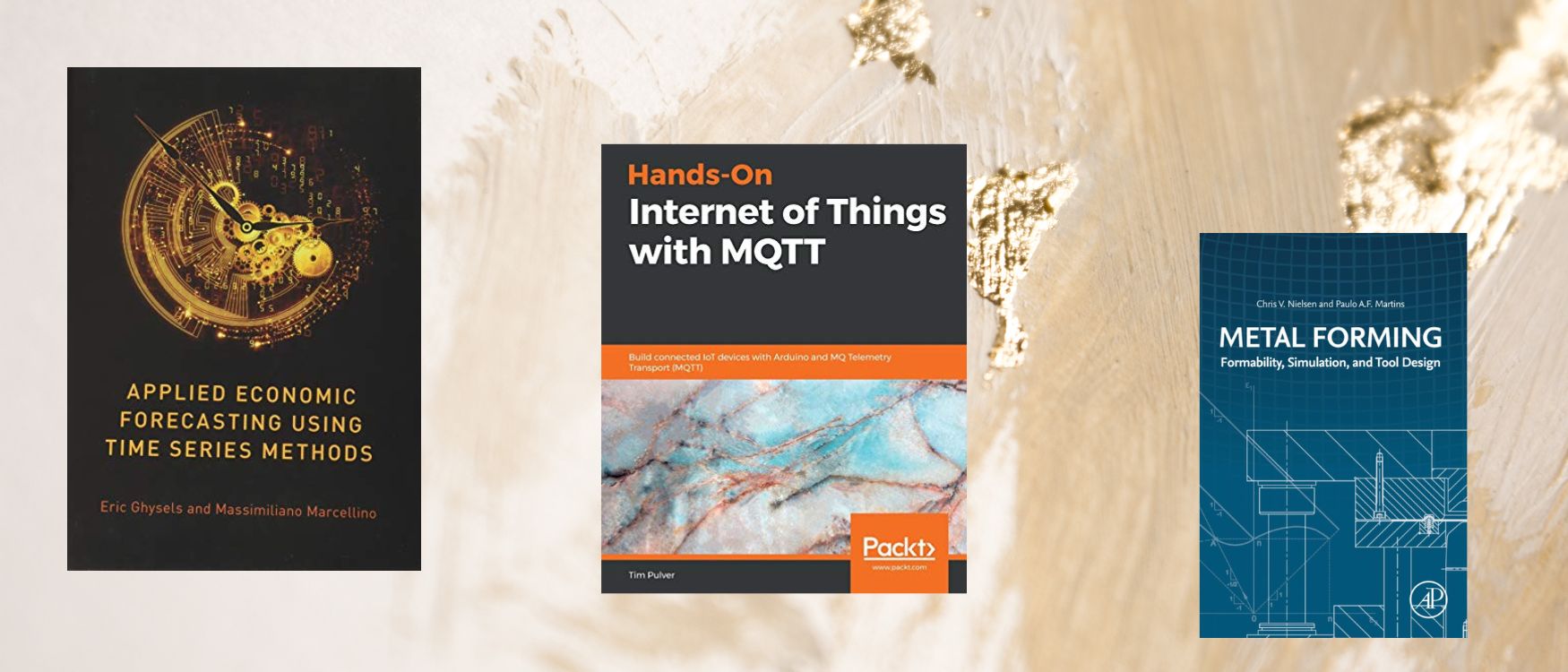
2023-08-03 15:35
New books available in the Library and Information Centre
Applied Economic Forecasting using Time Series Methods
Eric Ghysels (Author), Massimiliano Marcellino
Economic forecasting is a key ingredient of decision making both in the public and in the private sector. Because economic outcomes are the result of a vast, complex, dynamic and stochastic system, forecasting is very difficult and forecast errors are unavoidable.
Because forecast precision and reliability can be enhanced by the use of proper econometric models and methods, this innovative book provides an overview of both theory and applications. Undergraduate and graduate students learning basic and advanced forecasting techniques will be able to build from strong foundations, and researchers in public and private institutions will have access to the most recent tools and insights. Readers will gain from the frequent examples that enhance understanding of how to apply techniques, first by using stylized settings and then by real data applications--focusing on macroeconomic and financial topics.
This is first and foremost a book aimed at applying time series methods to solve real-world forecasting problems. Applied Economic Forecasting using Time Series Methods starts with a brief review of basic regression analysis with a focus on specific regression topics relevant for forecasting, such as model specification errors, dynamic models and their predictive properties as well as forecast evaluation and combination. Several chapters cover univariate time series models, vector autoregressive models, cointegration and error correction models, and Bayesian methods for estimating vector autoregressive models. A collection of special topics chapters study Threshold and Smooth Transition Autoregressive (TAR and STAR) models, Markov switching regime models, state space models and the Kalman filter, mixed frequency data models, nowcasting, forecasting using large datasets and, finally, volatility models. There are plenty of practical applications in the book and both EViews and R code are
available online at authors' website.
Hands-On Internet of Things with MQTT: Build connected IoT devices with Arduino and MQ Telemetry Transport (MQTT)
Tim Pulver
Develop a variety of projects and connect them to microcontrollers and web servers using the lightweight messaging protocol MQTT
Key Features
- Leverage the power of MQTT to build a pet food dispenser, e-ink to-do list, and a productivity cube
- Learn about technologies like laser cutting, 3D printing, and PCB production for building robust prototypes
- Explore practical uses cases to gain an in-depth understanding of MQTT
Book Description
MQ Telemetry Transport (MQTT) is a lightweight messaging protocol for smart devices that can be used to build exciting, highly scalable Internet of Things (IoT) projects.
This book will get you started with a quick introduction to the concepts of IoT and MQTT and explain how the latter can help you build your own internet-connected prototypes. As you advance, you'll gain insights into how microcontrollers communicate, and you'll get to grips with the different messaging protocols and techniques involved. Once you are well-versed with the essential concepts, you'll be able to put what you've learned into practice by building three projects from scratch, including an automatic pet food dispenser and a smart e-ink to-do display. You'll also discover how to present your own prototypes professionally. In addition to this, you'll learn how to use technologies from third-party web service providers, along with other rapid prototyping technologies, such as laser cutting, 3D printing, and PCB production.
By the end of this book, you'll have gained hands-on experience in using MQTT to build your own IoT prototypes.
What you will learn
- Explore MQTT programming with Arduino
- Discover how to make your prototypes talk to each other
- Send MQTT messages from your smartphone to your prototypes
- Discover how you can make websites interact with your prototypes
- Learn about MQTT servers, libraries, and apps
- Explore tools such as laser cutting and 3D printing in order to build robust prototype cases
Who this book is for
If you are an IoT developer or enthusiast who wants to start building IoT prototypes using MQTT, this book is for you. Basic knowledge of programming with Arduino will be useful.
Table of Contents
- Internet of Things in a Nutshell
- Basic architecture of an IoT prototype
- Getting started with MQTT
- Setting up a lab environment
- Build your own Automatic Pet Food Dispenser
- Build a smart eInk Todo List
- Build a Smart Productivity Cube Part 1
- Build a Smart Productivity Cube Part 2
- Present your own Prototype
Metal Forming: Formability, Simulation, and Tool Design
Chris V. Nielsen (Author), Paulo A.F. Martins
Metal Forming: Formability, Simulation, and Tool Design focuses on metal formability, finite element modeling, and tool design, providing readers with an integrated overview of the theory, experimentation and practice of metal forming. The book includes formability and finite element topics, including insights on plastic instability, necking, nucleation and coalescence of voids. Chapters discuss the finite element method, including its accuracy, reliability and validity and finite element flow formulation, helping readers understand finite element formulations, iterative solution methods, friction and contact between objects, and other factors. The book's final sections discuss tool design for cold, warm and hot forming processes.
Examples of tools, design guidelines, and information related to tool materials, lubricants, finishes, and tool failure are included as well.
- Provides fundamental, integrated knowledge on metal formability, finite element topics and tool design
- Outlines user perspectives on accuracy, reliability and validity of finite element modeling
- Discusses examples of tools, their design guidelines, tool lubricants, and tool failure
- Considers the role played by stress triaxiality and shear and introduces uncoupled ductile damage criteria
- Includes applications, worked examples and detailed techniques
